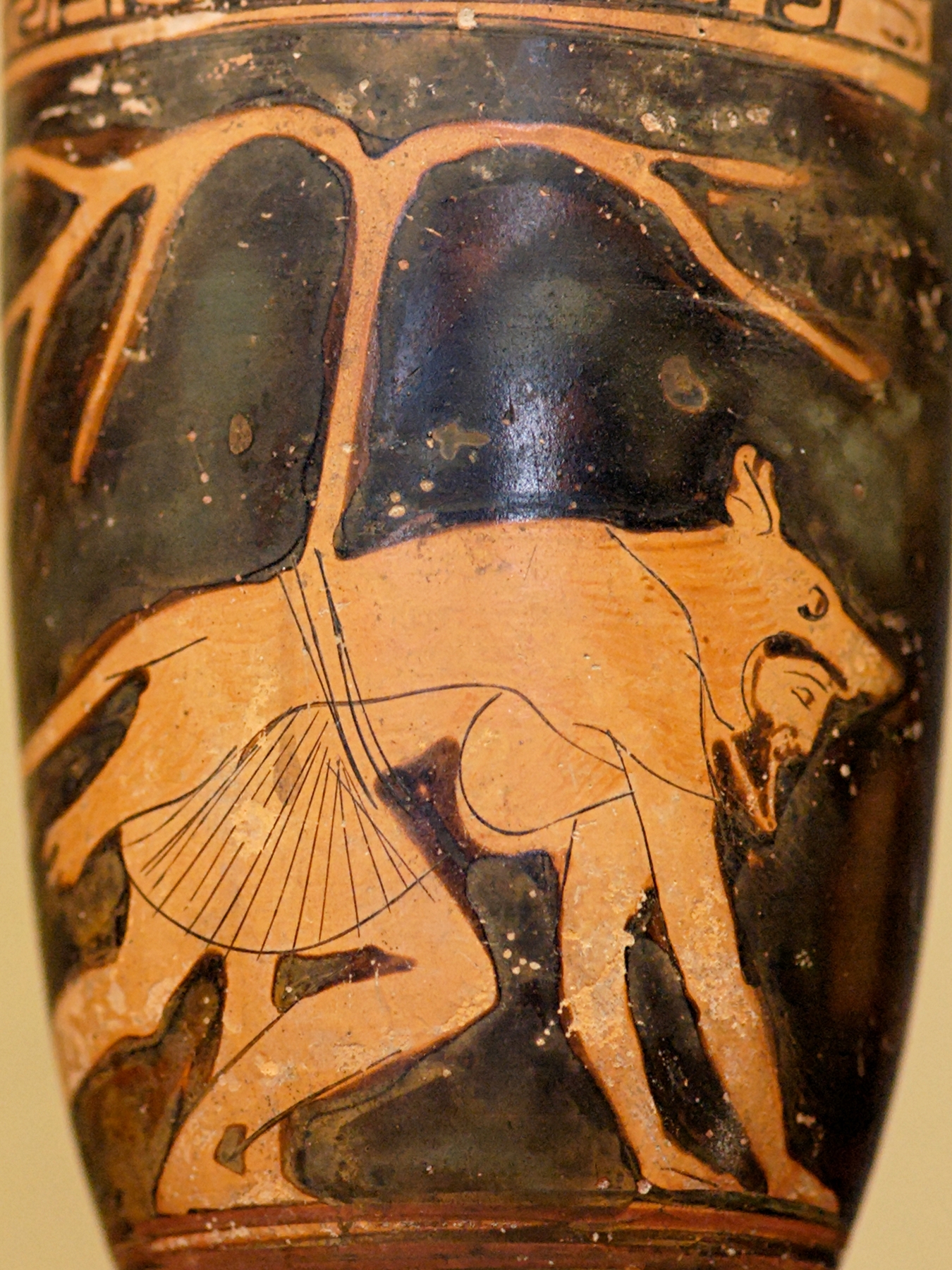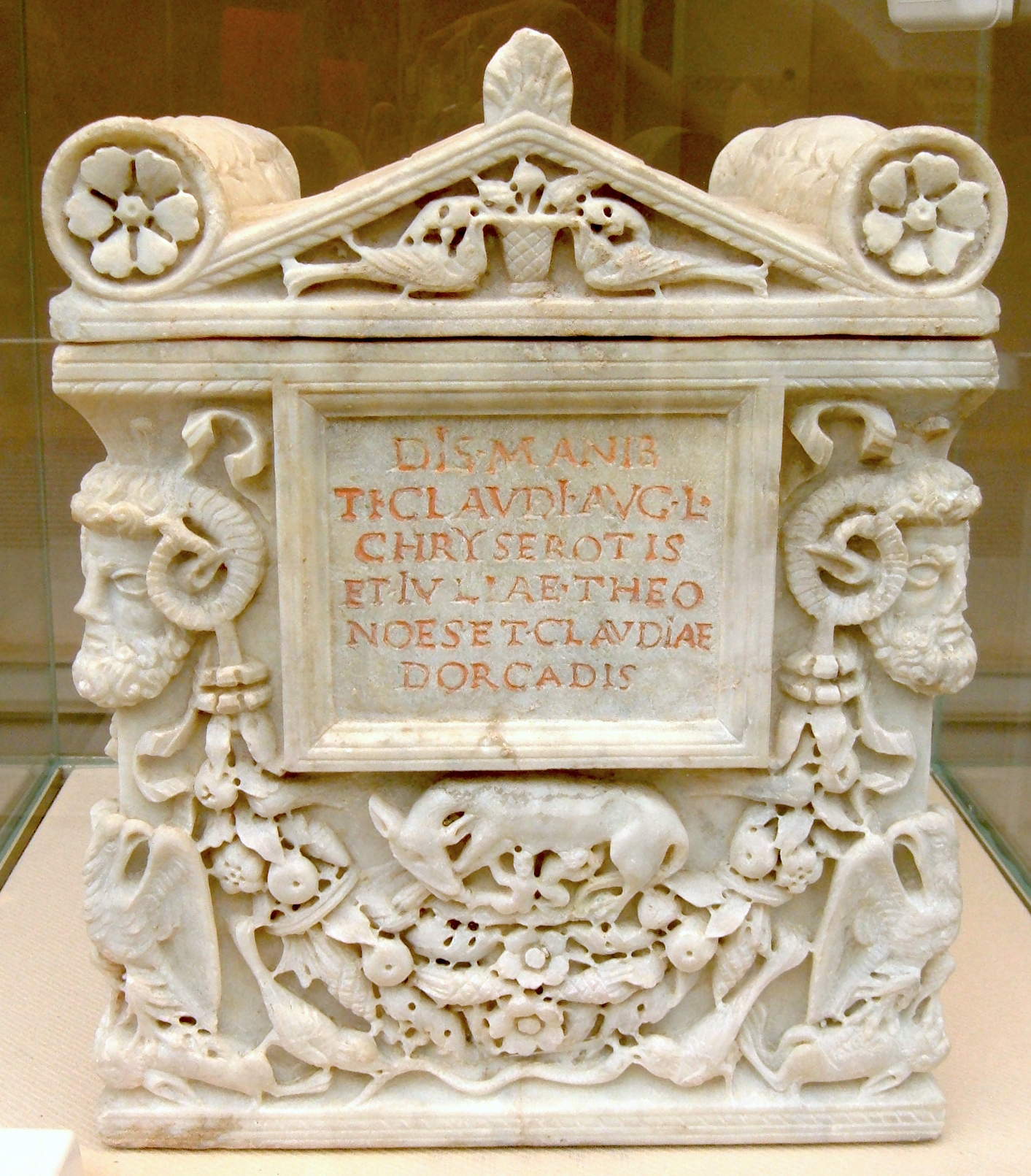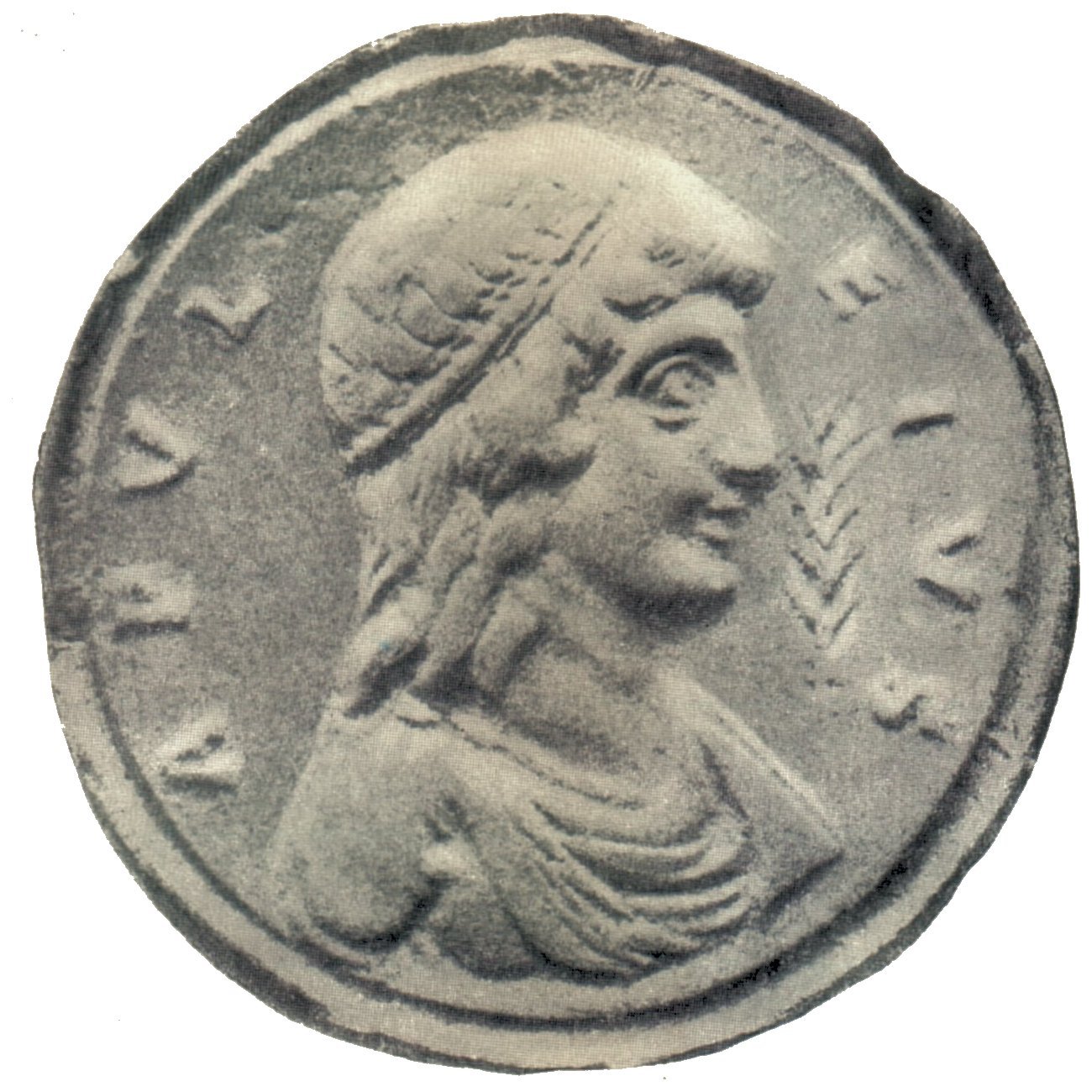|
Satyricon
The ''Satyricon'', ''Satyricon'' ''liber'' (''The Book of Satyrlike Adventures''), or ''Satyrica'', is a Latin work of fiction believed to have been written by Gaius Petronius in the late 1st century AD, though the manuscript tradition identifies the author as Titus Petronius. The ''Satyricon'' is an example of Menippean satire, which is different from the formal verse satire of Juvenal or Horace. The work contains a mixture of prose and verse (commonly known as ); serious and comic elements; and erotic and decadent passages. As with ''The Golden Ass'' by Apuleius (also called the ''Metamorphoses''), classical scholars often describe it as a Roman novel, without necessarily implying continuity with the modern literary form. The surviving sections of the original (much longer) text detail the bizarre exploits of the narrator, Encolpius, and his (possible) slave and catamite Giton, a handsome sixteen-year-old boy. It is the second most fully preserved Roman novel, after the fu ... [...More Info...] [...Related Items...] OR: [Wikipedia] [Google] [Baidu] |
Petronius
Gaius Petronius Arbiter"Gaius Petronius Arbiter" Britannica.com. (; ; ; sometimes Titus Petronius Niger) was a Roman Empire, Roman courtier during the reign of Nero (). He is generally believed to be the author of the ''Satyricon'', a satire, satirical novel believed to have been written during the Neronian era. He is one of the most important characters in Henryk Sienkiewicz' historical novel ''Quo Vadis (novel), Quo Vadis'' (1895). Leo Genn portrays him in Quo Vadis (1951 film), the 1951 film of the same name. Life A reference to Petronius by Sidonius Apollinaris places him, or his ''Satyricon'', in Massalia (ancient Marseille). He might have been born and educated there. Tacitus, Plutarch and Pliny the Elder describe Petronius as the ''elegantiae arbiter'' (also phrased '' ...[...More Info...] [...Related Items...] OR: [Wikipedia] [Google] [Baidu] |
Trimalchio
Trimalchio is a character in the 1st-century AD Roman work of fiction ''Satyricon'' by Petronius. He features as the ostentatious, nouveau-riche host in the section titled the "Cēna Trīmalchiōnis" (The Banquet of Trimalchio, often translated as "Dinner with Trimalchio"). Trimalchio is an arrogant former slave who has become quite wealthy as a wine merchant. The name "Trimalchio" is formed from the Greek prefix τρις and the Semitic מלך ( melech) in its occidental form Malchio or Malchus. The fundamental meaning of the root is "King", and the name "Trimalchio" would thus mean "Thrice King" or "greatest King". Character description His full name is "Gaius Pompeius Trimalchio Maecenatianus"; the references to Pompey and Maecenas in his name serve to enhance his ostentatious character. His wife's name is Fortunata, a former slave and chorus girl. Trimalchio is known for throwing lavish dinner parties, where his numerous slaves bring course after course of exotic delicacies, ... [...More Info...] [...Related Items...] OR: [Wikipedia] [Google] [Baidu] |
Quartilla
Quartilla is a character in the ''Satyricon'' which is said to be the "first picaresque" novel in Latin although it is not completely extant. This story was written by Petronius Arbiter in the first century. Quartilla is a follower of the god Priapus In Greek mythology, Priapus (; ) is a minor rustic fertility god, protector of livestock, fruit plants, gardens, and male genitalia. Priapus is marked by his oversized, permanent erection, which gave rise to the medical term priapism. He becam ... and she and her maids are involved with seducing and torturing three of the characters, Encolpius, Ascyltum, and Giton. She has been the subject of artistic and academic study. It has been proposed that she represents Octavia and her name is a pun like reference for the reader. References Bibliography * External links * {{cite web , first=Dennis P. , last=Quinn , url=http://www.arespress.com/AresPages/Quart.html , title=Quartilla's Cure , year=1997 , website=AresPress.com ... [...More Info...] [...Related Items...] OR: [Wikipedia] [Google] [Baidu] |
Habinnas
Habinnas is one of the guests at Trimalchio's Feast (''Cena Trimalchionis'') in the ''Satyricon'' of Petronius Arbiter. He is described as a stonemason, who has designed the luxurious tomb that Trimalchio shows off to his guests, and like Trimalchio he is a sevir. It has been suggested that the name is Semitic. His entry into the feast has been seen as a parody of that of Alcibiades in the Symposium of Plato."Petronius and Plato", Averil Cameron Dame Averil Millicent Cameron ( Sutton; born 8 February 1940), often cited as A. M. Cameron, is a British historian. She writes on Late Antiquity, Classics, and Byzantine Studies. She was Professor of Late Antiquity, Late Antique and Byzantine ..., ''The Classical Quarterly'', New Series, Vol. 19, No. 2 (Nov., 1969), pp. 367-37/ref> References Fictional ancient Romans Fictional artisans Fictional priests and priestesses Satyricon Characters in novels Male characters in literature {{Lit-char-stub ... [...More Info...] [...Related Items...] OR: [Wikipedia] [Google] [Baidu] |
Menippean Satire
The genre of Menippean satire is a form of satire, usually in prose, that is characterized by attacking mental attitudes rather than specific individuals or entities. It has been broadly described as a mixture of allegory, picaresque narrative, and satirical commentary.Paul Salzman, ''Narrative Contexts for Bacon's New Atlantis'', p. 39, in Bronwen Price (editor), ''Francis Bacon's New Atlantis'' (2002) Other features found in Menippean satire are different forms of parody and mythological burlesque, a critique of the myths inherited from traditional culture, a rhapsodic nature, a fragmented narrative, the combination of many different targets, and the rapid moving between styles and points of view. The term is used by classical grammarians and by philologists mostly to refer to satires in prose (cf. the verse Satires of Juvenal and his imitators). Social types attacked and ridiculed by Menippean satires include "pedants, bigots, cranks, parvenus, virtuosi, enthusiasts, rapacious ... [...More Info...] [...Related Items...] OR: [Wikipedia] [Google] [Baidu] |
Sibyl Of Cumae
The Cumaean Sibyl () was the priestess presiding over the Apollonian oracle at Cumae, a Greek colony near Naples, Italy. The word ''sibyl'' comes (via Latin) from the ancient Greek word ''sibylla'', meaning prophetess. There were many sibyls throughout the ancient world. Because of the importance of the Cumaean Sibyl in the legends of early Rome as codified in Virgil's ''Aeneid'' VI, and because of her proximity to Rome, the Cumaean Sibyl became the most famous among the Romans. The Erythraean Sibyl from modern-day Turkey was famed among Greeks, as was the oldest Hellenic oracle, the Sibyl of Dodona, dating to the second millennium BC according to Herodotus, favored in the east. The Cumaean Sibyl is one of the four sibyls painted by Raphael at Santa Maria della Pace (see gallery below). She was also painted by Andrea del Castagno (''Uffizi Gallery, illustration right''), and in the Sistine Ceiling of Michelangelo her powerful presence overshadows every other sibyl, even her young ... [...More Info...] [...Related Items...] OR: [Wikipedia] [Google] [Baidu] |
Novel
A novel is an extended work of narrative fiction usually written in prose and published as a book. The word derives from the for 'new', 'news', or 'short story (of something new)', itself from the , a singular noun use of the neuter plural of ''novellus'', diminutive of ''novus'', meaning 'new'. According to Margaret Doody, the novel has "a continuous and comprehensive history of about two thousand years", with its origins in the Ancient Greek and Roman novel, Medieval Chivalric romance, and the tradition of the Italian Renaissance novella.Margaret Anne Doody''The True Story of the Novel'' New Brunswick, NJ: Rutgers University Press, 1996, rept. 1997, p. 1. Retrieved 25 April 2014. The ancient romance form was revived by Romanticism, in the historical romances of Walter Scott and the Gothic novel. Some novelists, including Nathaniel Hawthorne, Herman Melville, Ann Radcliffe, and John Cowper Powys, preferred the term ''romance''. Such romances should not be con ... [...More Info...] [...Related Items...] OR: [Wikipedia] [Google] [Baidu] |
Werewolf
In folklore, a werewolf (), or occasionally lycanthrope (from Ancient Greek ), is an individual who can shapeshifting, shapeshift into a wolf, or especially in modern film, a Shapeshifting, therianthropic Hybrid beasts in folklore, hybrid wolf–humanlike creature, either purposely or after being placed under a curse or affliction, often a bite or the occasional scratch from another werewolf, with the transformations occurring on the night of a full moon. Early sources for belief in this ability or affliction, called lycanthropy, are Petronius (27–66) and Gervase of Tilbury (1150–1228). The werewolf is a widespread concept in European folklore, existing in many variants, which are related by a common development of a Christianization, Christian interpretation of underlying European folklore developed during the Middle Ages. From the early modern period, werewolf beliefs spread to the New World with colonialism. Belief in werewolves developed in parallel to the belief in Eu ... [...More Info...] [...Related Items...] OR: [Wikipedia] [Google] [Baidu] |
Freedman
A freedman or freedwoman is a person who has been released from slavery, usually by legal means. Historically, slaves were freed by manumission (granted freedom by their owners), emancipation (granted freedom as part of a larger group), or self-purchase. A fugitive slave is a person who escaped enslavement by fleeing. Ancient Rome Rome differed from Greek city-states in allowing freed slaves to become plebeian citizens. The act of freeing a slave was called ''manumissio'', from ''manus'', "hand" (in the sense of holding or possessing something), and ''missio'', the act of releasing. After manumission, a slave who had belonged to a Roman citizen enjoyed not only passive freedom from ownership, but active political freedom ''(libertas)'', including the right to vote. A slave who had acquired ''libertas'' was known as a ''libertus'' ("freed person", feminine ''liberta'') in relation to his former master, who was called his or her patron ''( patronus)''. As a social class, fr ... [...More Info...] [...Related Items...] OR: [Wikipedia] [Google] [Baidu] |
Asiatic Style
The Asiatic style or Asianism (, Cicero, '' Brutus'' 325) refers to an Ancient Greek rhetorical tendency (though not an organized school) that arose in the third century BC, which, although of minimal relevance at the time, briefly became an important point of reference in later debates about Roman oratory.Winterbottom, M. 2012 ‘Asianism and Atticism’ in Hornblower, A., Spwaforth, A. and Eidinow, E. (eds.) Oxford Classical Dictionary (4th ed.) 184 Origin Hegesias of Magnesia was Asianism's first main representative and was considered its founder. Hegesias "developed and exaggerated stylistic effects harking back to the sophists and the Gorgianic style." Characteristics Unlike the more austere, formal and traditional Attic style, Asiatic oratory was more bombastic, emotional, and coloured with wordplay. The Asiatic style was distinguished by the use of a prose rhythm, especially the end of clauses (''clausulae'').Cic. Orat. LXIX/230-1 This worked in much the same way ... [...More Info...] [...Related Items...] OR: [Wikipedia] [Google] [Baidu] |
Prosimetrum
A ''prosimetrum'' (plural ''prosimetra'') is a poetic composition which exploits a combination of prose (''prosa'') and verse (''metrum'');Braund, Susanna. Prosimetrum. In Cancil, Hubert, and Helmuth Schneider, eds. ''Brill's New Pauly''. Brill Online, 2012. Retrieved 2 October 2015. in particular, it is a text composed in alternating segments of prose and verse.Brogan, T.V.F. "Prosimetrum". In Green et al., pp. 1115–1116. It is widely found in Western and Eastern literature. While narrative ''prosimetrum'' may encompass at one extreme a prose story with occasional verse interspersed, and at the other, verse with occasional prose explanations, in true ''prosimetrum'' the two forms are represented in more equal measure.Harris & Reichl, p. 11. A distinction is sometimes drawnHanson, Kristin, and Paul Kiparsky. "The Nature of Verse and Its Consequences for the Mixed Form". In Harris & Reichl, p. 36. between texts in which verse is the dominant form and those in which prose dominates ... [...More Info...] [...Related Items...] OR: [Wikipedia] [Google] [Baidu] |
Apuleius
Apuleius ( ), also called Lucius Apuleius Madaurensis (c. 124 – after 170), was a Numidians, Numidian Latin-language prose writer, Platonist philosopher and rhetorician. He was born in the Roman Empire, Roman Numidia (Roman province), province of Numidia, in the Berbers, Berber city of Madauros, modern-day M'Daourouch, Algeria. He studied Platonism in Athens, travelled to Roman Italy, Italy, Asia (Roman province), Asia Minor, and Egypt (Roman province), Egypt, and was an initiate in several cults or Greco-Roman mysteries, mysteries. The most famous incident in his life was when he was accused of using magic to gain the attentions (and fortune) of a wealthy widow. He declaimed and then distributed his own defense before the proconsul and a court of magistrates convened in Sabratha, near Oea (modern Tripoli, Libya, Tripoli, Libya). This is known as the ''Apologia''. His most famous work is his bawdy picaresque novel the ''Metamorphoses'', otherwise known as ''The Golden Ass''. It ... [...More Info...] [...Related Items...] OR: [Wikipedia] [Google] [Baidu] |




